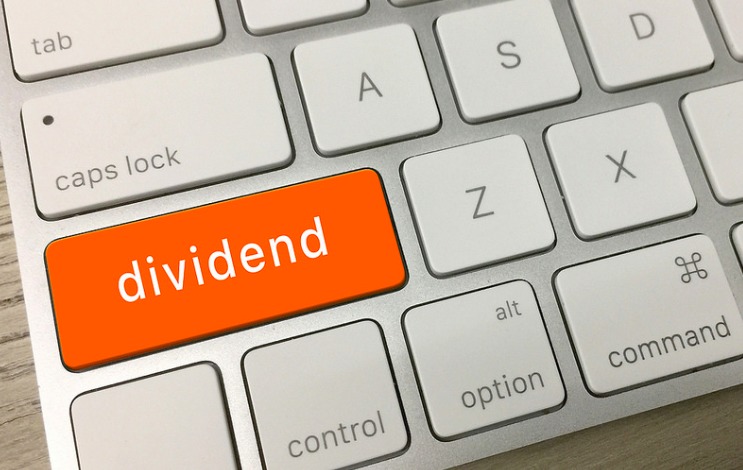The US is one of the largest wealth creation machines in the history of the world.
According to Credit Suisse, American stocks returned an inflation-adjusted annualized 6.5% between 1900 and 2014 – behind only Australia and South Africa, which lead all international stocks at 7.4% each. Go, ‘Merica!

Global Plays
But while American stocks have been the better long-term bet, they’re not always the best bargain.
In fact, the U.S. market is priced to deliver subpar returns over the next decade, whereas many international stocks are downright cheap.
The cyclically adjusted price-to-earnings ratio (“CAPE”) is more than double its long-term average. But while U.S. stocks are looking bubbly, investors can find bargains overseas.
Here are 5 dividend plays that might be worth a look in my opinion.
BP Dividend yield: 5.5% as of Jan. 20
British oil major BP has been something of a pariah stock ever since the 2010 Deepwater Horizon Gulf of Mexico oil spill. On Jan. 16, BP announced it was taking another $1.7 billion hit to earnings because of the ongoing costs of the legal settlement.
The total cost to BP for the disaster is now estimated to be about $65 billion, making it by far the most expensive disaster in history for a company.
But here’s the thing in my view: All of this was priced into the stock years ago. But this is a major integrated oil major trading at a price-to-sales ratio of 0.6. To put that in perspective, rival Exxon Mobil (XOM) trades at a ratio of 1.7 – nearly three times higher.
BP also yields a very attractive 5.5%. And as crude oil prices continue to normalize and as the company’s legal liabilities get resolved, BP may reward its patient investors by raising its dividend.
This oil giant is not completely without risks, of course. Energy prices have been punishingly volatile over the past three years, and BP is more aggressively leveraged than its oil-major peers. But if you like a good turnaround story, BP in my opinion is worth a look.
Total SA Dividend yield: 4.7% as of Jan. 20
Along the same lines, French integrated oil major Total SA, in my view, is an attractive play.
You don’t hear much about Total on this side of the Atlantic, but it is one of the world’s largest oil and gas company. As a fully integrated oil major, the company operates through three segments: Upstream (exploration and production), Refining & Chemicals, and Marketing & Services.
Total currently is exploring or producing in more than 50 countries worldwide, and its sprawling Refining & Chemicals segment makes an assortment of petrochemicals and polymer derivatives such as polyethylene and polypropylene. The company also operates approximately 16,000 service stations.
Energy companies tend to be big dividend payers, and Total is no exception. The stock offers a yield of 4.7% and has managed to continue growing its payout despite a very difficult pricing environment for oil and gas.
Total has improved or maintained its dividend every year since 1982.
ABB Dividend yield: 2.7% as of Jan. 20
Most readers have probably never heard of ABB , but this part-Swedish, part-Swiss company has a presence in more than 50 countries and builds a lot of the “guts” that make the modern economy function. ABB builds power grid systems and assorted robotics and automation systems, among things.
In my opinion, ABB also is very active in building electric vehicle charging stations as well as equipment to harness solar, wind and other alternative energies. If you believe in a greener future, I believe ABB will be a big part of that.
As you might expect for an electrical infrastructure company, ABB gets a large share of its revenues from the developing world. Emerging markets made up 46% of revenues in 2016, the most recent annual data available. So, in ABB, I believe you get a nice combination of mature European management and attractive emerging-market growth.
ABB delivers a current dividend of 2.7%, and has steadily grown the payout despite a very tumultuous couple of years in most of the developing world. From 2013-17 – a period in which most EM economies struggled – ABB raised its dividend by about 9%.
Unilever Dividend yield: 2.7% as of Jan. 20
Few companies in the world boast products as ubiquitous as those of Anglo-Dutch consumer staples company Unilever. Its empire includes personal care brands such as Axe, Dove and Vasoline, and food and drink brands such as Lipton iced tea, Hellmann’s mayonnaise and Ben & Jerry’s ice cream, among many, many others.
There really is only one consumer brands company in the world that matches Unilever’s name recognition and sheer breadth of product lines, and that is America’s Procter & Gamble (PG).
In my view, Unilever has one major advantage over its American rival. Due in part to old colonial connections and to forward thinking by generations of management, Unilever has a massive presence in emerging markets. EMs account for fully 57% of Unilever’s business, and I believe that figure will only get bigger with time.
UL offers a current dividend of 3.1%, and the company has a long history of raising its payout. Since moving to a quarterly payment schedule in late 2009, Unilever has hiked its dividend by 88%.
National Grid Dividend yield: 5.0% as of Jan. 20
Britain’s National Grid is a mainstay in many international dividend ETFs and funds. It’s easy enough to understand why. As one of the largest electricity and gas companies in the United Kingdom and United States, it’s considered a stable and reliable dividend machine.
Utilities might not be the most glamorous sector, but they have incredible barriers to entry. National Grid owns and operates 7,200 kilometers of power lines, 1,500 kilometers of underground cable and 7,660 kilometers of high-pressure gas pipelines, among many other assets, in the U.K. alone. It would be cost-prohibitive and impractical for any would-be competitor to try to replicate that.
It’s not all sunshine and roses for the utilities sector, of course. As a highly regulated sector, utility companies generally are at the mercy of their respective governments. Furthermore, the push to integrate solar and other renewable energy sources is a large, open-ended risk to the traditional model.
That said, in my opinion, the bad news would seem to be priced in. At current prices, National Grid is trading near five-year lows and yields a very respectable 5%.
You won’t get rich buying National Grid in my opinion, but it’s worth considering as an income-generating workhorse.
This article first appeared at Kiplinger.com
Photo Credit: Mike Lawrence via Flickr Creative Commons
Disclosures:
Any investments discussed in this presentation are for illustrative purposes only and there is no assurance that the adviser will make any investments with the same or similar characteristics as any investments presented. The investments are presented for discussion purposes only and are not a reliable indicator of the performance or investment profile of any composite or client account. Further, the reader should not assume that any investments identified were or will be profitable or that any investment recommendations or that investment decisions we make in the future will be profitable.
Certain of the information contained in this presentation is based upon forward-looking statements, information and opinions, including descriptions of anticipated market changes and expectations of future activity. IB Asset Management believes that such statements, information, and opinions are based upon reasonable estimates and assumptions. However, forward-looking statements, information and opinions are inherently uncertain and actual events or results may differ materially from those reflected in the forward-looking statements. Therefore, undue reliance should not be placed on such forward-looking statements, information and opinions.




